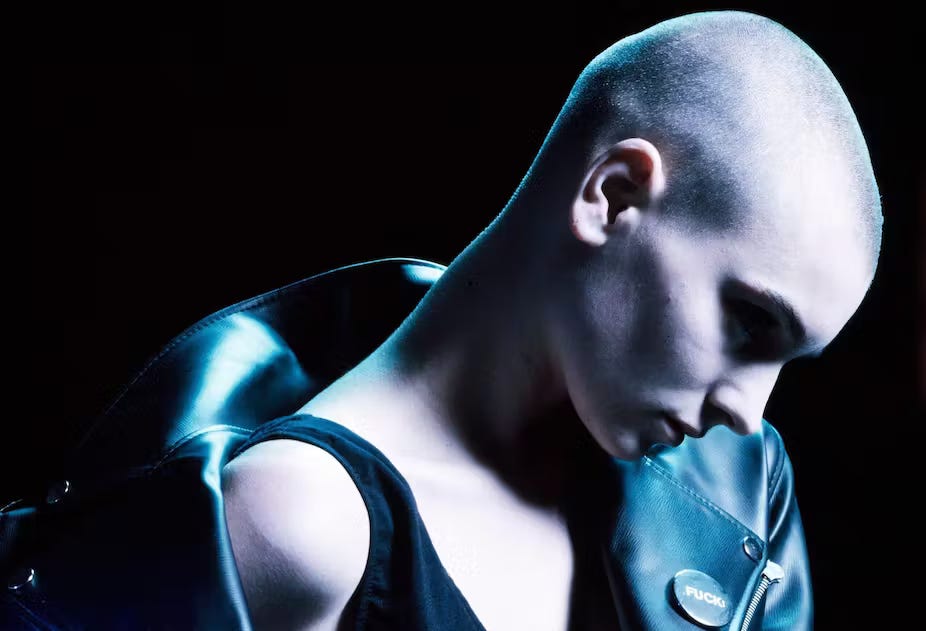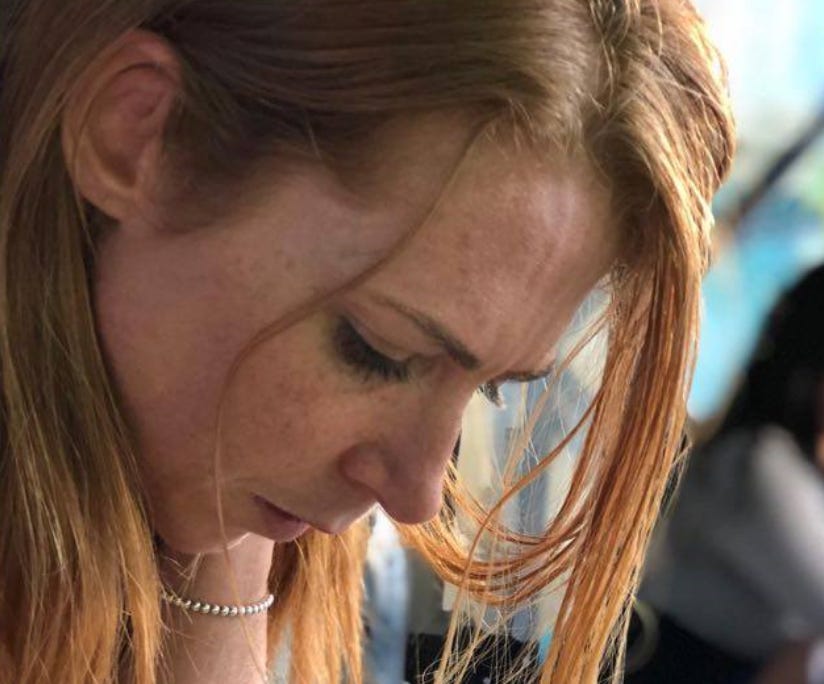This morning, we heard the news of Sinéad O’Connor’s passing. We reflected on how young she still would have been, and on the circumstances of her life, her art, her courage to speak against the Catholic Church in her native country, into an already charged subject, at the heart of so much suffering and ‘troubles’.
That is a very Irish turn of phrase for deep levels of distress and spiritual unwellness which can visit a human life.
That is what the civil tragedy in Northern Ireland was called that took relatively few lives but displaced so many others and left others psychologically wounded and both mentally and spiritually unwell for life. It is a wounding which added to an already deeply wounded Irish psyche, the after affects which are still central to so much distress and suffering, doomed to affect countless generations of children, some yet to open their eyes to the world. It was called ‘The Troubles’.
Since she was pregnant with our daughter, my wife has been connecting with her Irish heritage through podcasts and novelised accounts of historical events and people that shaped present day Ireland. After each new book or each podcast episode she always has the same look on her face and the same sad body language. I had seen her sad before, so I knew it was not simply sadness. I asked her what it was and she explained that the stories are each so deep and so moving, but always so tragic and so full of sorrow.
The stories are in fact, one after the next, these accounts of incredible vision and daring endeavour, which always seemed to end in tragedy. Tragedy we are reminded is not just when the bad thing happened, but when it occurs in the face of such rousing potential, and when it was avoidable. My wife was being touched by a sense of the unrequitedness, the seeming inevitability of all that sorrow, that so rarely had a silver lining. She experienced that overwhelming empathy and sense of injustice that can touch us all at times. This being, not simply about observing or experiencing sorrow, but rather, it's when we are compelled deeply by our human soul in recognising an enduring sorrow whose conclusion remains unseen to us. An end which that innate part of us feels ought to be tied off; our eternal quest and hope, for Meaning - our deep sense of spiritual belonging.
The history of Ireland might well be summed up as ‘troubling’, and so much, but not all, of that incredible amount of tragedy, loss and suffering was enacted on the Irish, by the Irish, and much of that again under the rubric of the Catholic Faith. The more I learn about Ireland, the more an understanding dawns in me about the egregiousness of that wounding, coming as it did through the most vulnerable door, which is the Irish inheritance of sacredness and spiritual ‘belonging’.
My wife lived her whole life in the shadow of that deep wounding, with the poisons of those ‘troubles’ nested into her own psyche, a work she is wedded to with a devout commitment, in which she redoubled her efforts once we learned we would be pregnant with our daughter, Maia. My wife Dympna, lives with a mission to heal an impossibly deep well of generational trauma, to ensure none of it leaks past the seals of her courage and onto our daughter.
My wife grew up in a staunch Irish Catholic household, a family displaced from their homeland, who would gather on the weekends with friends to sing ‘Republican songs’, the sentiment of which often centered around that sense of deep wounding which manifested as an understandable but abidingly bitter resentment. It was in that context she was informed of ‘the hubris and folly’ of Sinead O’Connor, who dared to blaspheme against so untouchable an institution.
This article is in honour of the lived courage of my wife, and her own short but poignant article on the lived courage of Sinéad O’Connor.
The below is my wife’s writing.
Her Mission was to rescue God from Religion
I was 13 years old when Sinéad O’Connor ripped up a picture of the pope on Saturday Night Live. Being raised Irish Catholic and also attending a Catholic school, through the cultural filter of which the story arrived to my young, impressionable ears, being that of a woman who hated Catholics and was not sound of mind; pure devilry. The antithesis of everything a good woman ought to be.
It was not until I was an adult that I was able to revisit the story and decipher its true intent, I was devastated to say the least. I had already started ripping at the velcro of the shame inherited through my Catholic beliefs and I was coming to terms with a loss of faith and this added to that sense of betrayal.
Sinéad O’Connor was only 26 when she threw it all on the line, not for fame or scandal or attention but to attempt to expose abuse of the worst kind. She was villainised & witch hunted and her character was torn to shreds for essentially speaking a truth that those of us who were sheltered by the safety of our institutions did not and could not face.
My intent in writing this is not to virtue-signal or to slam the Catholic Church, or its disciples, but to honour a woman who clearly struggled in this world but had the courage to be vulnerable in her authenticity, and to stand outside of the village to maintain her own integrity, no matter the cost -in every way, everything a woman should be valued for, and should never have to do. Thank God for people like her.
Sláinte to you, Sinéad!
Dympna Jarman






Well said Rocco and Dympna! 👏🏻